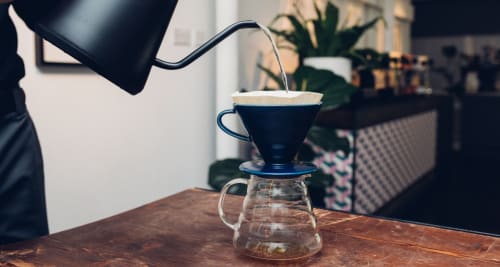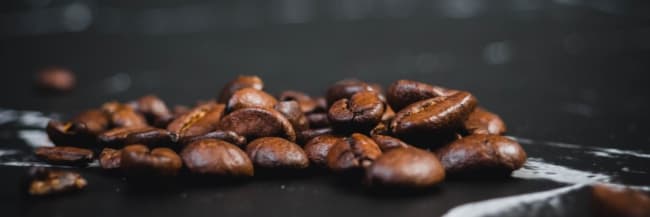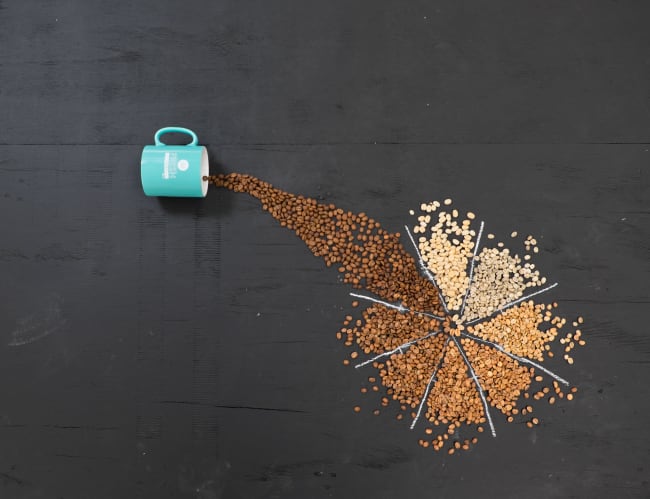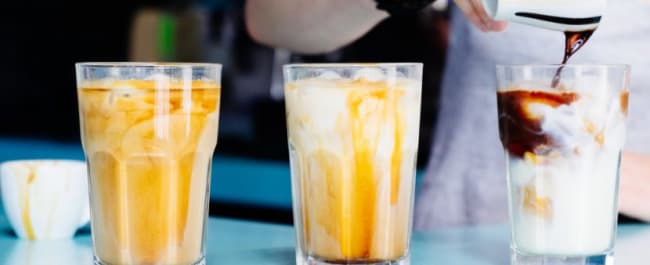If you’re looking to cut down your caffeine consumption but still fancy the delicious taste of speciality coffee, decaf could be the answer.
Decaf coffee tends to get a bad rap and while we are not in the least bit precious about which brew you go for (you do you!) we think it’s our duty as coffee lovers to share our knowledge and answer some of your most frequently asked questions about decaf.
So without further ado, let’s talk decaf!

Question 1. I’ve always avoided decaf as i’ve heard it tastes bad. Is this true?
Many people think that decaf coffee simply doesn’t taste nice. Now, it may be that you have sipped a bad cup of decaf in your time, but the truth is that this is down to the producer rather than decaf itself.
The reason for this is that most coffee is only sent for decaffeination well past its freshness peak. The majority of decaf coffee has been sitting in a warehouse going off for months before being decaffeinated as a last ditch attempt to sell it.
At Pact, decaf coffee is much more than an afterthought. We send our green coffee for decaffeination straight away, so when it reaches your lips it’s just as fresh and quality-checked as our caffeinated coffee. It tastes delicious as a result.
Question 2. How is the caffeine removed from coffee?
There are four main methods for decaffeinating coffee which we talk about at length in another blog, How decaf coffee is made.
At Pact, we presently use the Carbon Dioxide (CO2) Method to decaffeinate our coffee.
The Carbon Dioxide Method uses highly-pressurised liquid CO2 to remove the caffeine, leaving behind 99.9% caffeine-free beans. The beans are added to a water tank and the pressurised CO2 is circulated throughout the coffee, drawing the caffeine out of the bean but leaving behind all the flavour - unlike some other methods. An evaporation stage draws out the caffeine, and the whole process is repeated until all the beans are decaffeinated.
The coffee is then gently dried until it reaches the original moisture content - ready for to be roasted at our Surrey Roastery. This method results in deliciously flavourful decaf coffee!
We are currently expanding our decaf methods to include the Sugar Cane Method and want to increase decaffeination at origin to further support the people at the heart of the industry.

Question 3. Why doesn’t Pact Coffee offer all its coffee in decaf varieties?
When coffee is sent for decaffeination, orders are completed in 3 tonne batches. Each bag of decaf coffee is 250g so we would have to sell 12,000 bags of each variety if we were to offer decaf on every line. Currently, the UK is far more enamoured with the buzz of caffeinated coffee so offering a surplus of decaf would only lead to waste.
The good news is a second line of decaf is due to land in February which means all decaf lovers will have a choice of two decaf coffees at all times. And, if demand increases we will of course expand our decaf lines even further.
Question 4. I’ve heard decaf coffee uses a lot of water. Isn’t this bad for the environment?
Although some decaffeination methods do require large volumes of water, the bi-products of decaffeination are used for other products such as paracetamol, so the excess water is re-purposed.
Question 5. How much caffeine is left in coffee after being decaffeinated?
If you’re drinking decaf to cut down on your caffeine intake, naturally you’ll want to know how much (if any) caffeine is left in your cup. The good news is that the decaffeination methods we use remove 99.9% of caffeine. While not completely caffeine-free, the amount of caffeine left in each cup of Pact Coffee is minimal.

So, in a nutshell, our decaf coffee is different because…
- We send our green coffee to decaffeination immediately so it is just as fresh and delicious as our caffeinated lines.
- We care about taste and quality and pour just as much love into our decaf offering as our caffeinated coffees.
- We freshly roast all decaf coffee and recommend consuming your bag of decaf within 12 weeks for maximum tastiness.
- We are about to launch our second line of decaf, offering you more choice.
- We use the Carbon Dioxide (CO2) Method to decaffeinate our coffee and are looking at other methods such as Sugar Cane.
-
We decaffeinate coffee at origin (where possible) to further support the coffee farming countries we buy from.
Fancy giving our delicious decaf a go? Simply change your preferences in your Account area or purchase Decaf coffee through the store.
Read more:







